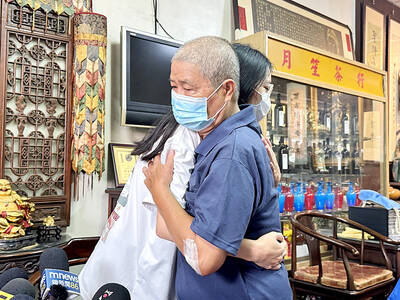On a kitchen table two young women have assembled a variety of items. There are brown bottles, bags of white powder, a pestle and mortar, a collection of funnels, a roll of silver gaffer tape. There is a drill. There is a whisk.
Are they making bombs? Are they making drugs? No. They are doing something far more likely to change the world we live in. They're making their own version of Coca-Cola.
Codenamed "Merchandise 7X," the list of ingredients that go into Coke has been kept carefully shrouded in mystery since the drink's inventor, a medicinal chemist called John Pemberton, first wrote it down in 1886. These days it is supposedly kept under 24-hour guard in a vault in Atlanta, Georgia, which is odd considering that author Mark Pendergrast published it in his expose of the cola industry For God, Country & Coca-Cola in 1993. The company maintains that this recipe is not the same as the one it uses.
Kate Rich and Kayle Brandon are bar managers at the Cube Multiplex, an "alternative" cinema in Bristol in southwestern England. Opposed in principle to the business and environmental practices of the Coca-Cola corpora-tion, the Cube bar has never served Coke. That doesn't mean there isn't a demand for it.
"We'd tried Pepsi and Virgin Cola and various others too," says Brandon, "but they weren't really a positive alternative. They were acceptable, but they weren't Coke. And people really want Coke."
After conducting various taste tests, they felt the preference had less to do with flavor than the power of the brand. Any alternative they were going to offer had not only to taste almost identical but overcome the incredible pull of Coca-Cola's marketing.
DIY attitude
"Given that most of the Cube's customers come because they like the place's DIY attitude," Brandon explains, "one way of doing that was to make the cola ourselves."
Cola is basically a mix of caramel, caffeine, sugar, fizzy water, citric or phosphoric acid and eight essential oils. It's the precise blend of these oils that lies at the heart of the 7X secret formula.
A trawl of the Web soon uncovered several 7X-type recipes, the most promising of which was adapted from the one in Pendergrast's book.
But turning the recipe into a palatable drink turned out to be more difficult than it looked.
"The oils we had to import from the US," says Rich. "The caramel had to be sourced direct from DD Williamson, a large operation based in Manchester which provides the caramel for all the Coca-Cola manufactured in the UK. And the caffeine we found at a body-building Web site."
When they had assembled most of the kit, they invited friends along to an "open lab" to help them make the drink.
"Unfortunately none of us had any scientific knowledge, and it's quite a scientific process," Rich says. "We spent half our time running out to get ingredients that we didn't have."
Though they came up with something like cola by the end of that first day, they couldn't replicate their success. The problem was getting the oils to mix with the other ingredients, a process called emulsification, or binding together.
The emulsifier used in most soft drinks is dried acacia sap, better known as gum arabic. But Rich and Brandon couldn't get this to work.
"We managed to destroy a whole series of kitchen mixers, completely trashed them. The gum arabic scoured the sides, the blades snapped ... it was really violent and very distressing," Rich says.
After the fourth mixer crashed, they realized it was time to seek help. A mass e-mail to the Cube's mailing list uncovered Peter Baron, an expert in food emulsification. He pointed out that they were using the wrong kind of gum arabic.
Baron also pointed out that making an emulsion was all about force. Rich and Brandon had scaled up their quantities, but not their mixing power. They were looking forlornly at the constituents of their cola lab when they noticed the tubular metal handle on one of their hand whisks was about the same thickness as a large drill bit.
Bingo! Whisking the mixture with a hammer drill produced the desired effect.
taste test
All they needed to do now was to add caffeine, caramel, sugar, citric acid and sparkling water -- and suddenly, from a single cup of emulsion, they had enough cola for a month.
So how does it taste? First, we try the real Coca-Cola. A restrained sweetness, low cool notes of caramel, dry on the tongue, quite flat on the palette. Very refreshing, but with little depth.
Now for Rich and Brandon's home-made product. The initial surprise is that it really does taste like Coke. Very slightly sweeter than "the real thing" but less acidic. A satisfying, complex flavor, subtly different from the brand leader, but easily as good.
Having found their liquid gold, Brandon and Rich plan to sell concentrate kits to other small bars and businesses. They maintain that they are not out to challenge the Coca-Cola hegemony, but they "do hope that along the way we'll help produce a small reality shift.
It's social change through science and baking."
The mega-corporation remains unfazed.
"As the saying goes, imitation is the sincerest form of flattery," says a Coca-Cola spokesman. "But our product is unique. Anyone with a selection of ingredients could make a type of cola, but there can only be one Coke."

A Chinese aircraft carrier group entered Japan’s economic waters over the weekend, before exiting to conduct drills involving fighter jets, the Japanese Ministry of Defense said yesterday. The Liaoning aircraft carrier, two missile destroyers and one fast combat supply ship sailed about 300km southwest of Japan’s easternmost island of Minamitori on Saturday, a ministry statement said. It was the first time a Chinese aircraft carrier had entered that part of Japan’s exclusive economic zone (EEZ), a ministry spokesman said. “We think the Chinese military is trying to improve its operational capability and ability to conduct operations in distant areas,” the spokesman said. China’s growing

Nine retired generals from Taiwan, Japan and the US have been invited to participate in a tabletop exercise hosted by the Taipei School of Economics and Political Science Foundation tomorrow and Wednesday that simulates a potential Chinese invasion of Taiwan in 2030, the foundation said yesterday. The five retired Taiwanese generals would include retired admiral Lee Hsi-min (李喜明), joined by retired US Navy admiral Michael Mullen and former chief of staff of the Japan Self-Defense Forces general Shigeru Iwasaki, it said. The simulation aims to offer strategic insights into regional security and peace in the Taiwan Strait, it added. Foundation chair Huang Huang-hsiung

PUBLIC WARNING: The two students had been tricked into going to Hong Kong for a ‘high-paying’ job, which sent them to a scam center in Cambodia Police warned the public not to trust job advertisements touting high pay abroad following the return of two college students over the weekend who had been trafficked and forced to work at a cyberscam center in Cambodia. The two victims, surnamed Lee (李), 18, and Lin (林), 19, were interviewed by police after landing in Taiwan on Saturday. Taichung’s Chingshui Police Precinct said in a statement yesterday that the two students are good friends, and Lin had suspended her studies after seeing the ad promising good pay to work in Hong Kong. Lee’s grandfather on Thursday reported to police that Lee had sent

BUILDUP: US General Dan Caine said Chinese military maneuvers are not routine exercises, but instead are ‘rehearsals for a forced unification’ with Taiwan China poses an increasingly aggressive threat to the US and deterring Beijing is the Pentagon’s top regional priority amid its rapid military buildup and invasion drills near Taiwan, US Secretary of Defense Pete Hegseth said on Tuesday. “Our pacing threat is communist China,” Hegseth told the US House of Representatives Appropriations Subcommittee on Defense during an oversight hearing with US General Dan Caine, chairman of the Joint Chiefs of Staff. “Beijing is preparing for war in the Indo-Pacific as part of its broader strategy to dominate that region and then the world,” Hegseth said, adding that if it succeeds, it could derail